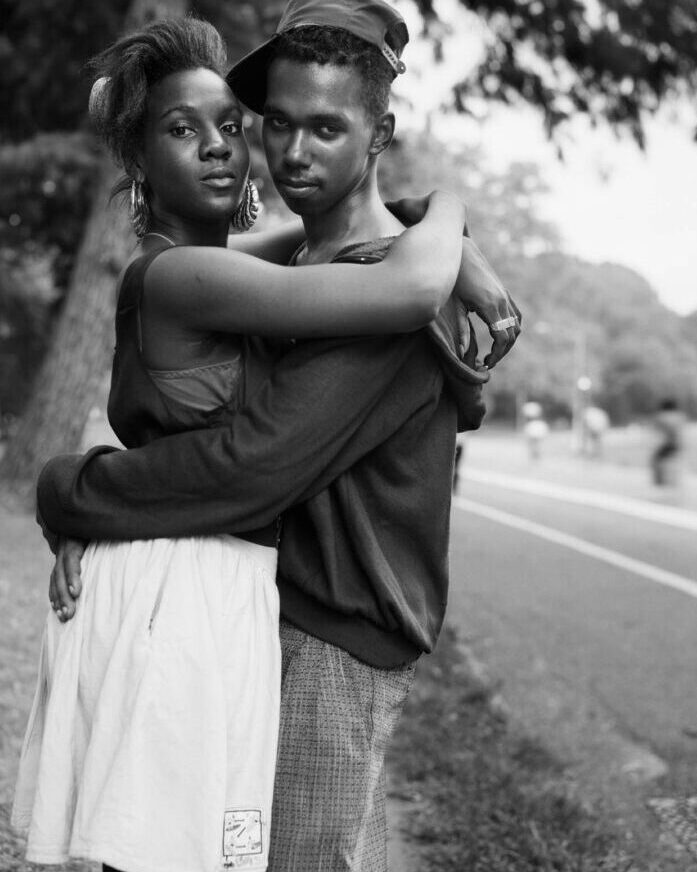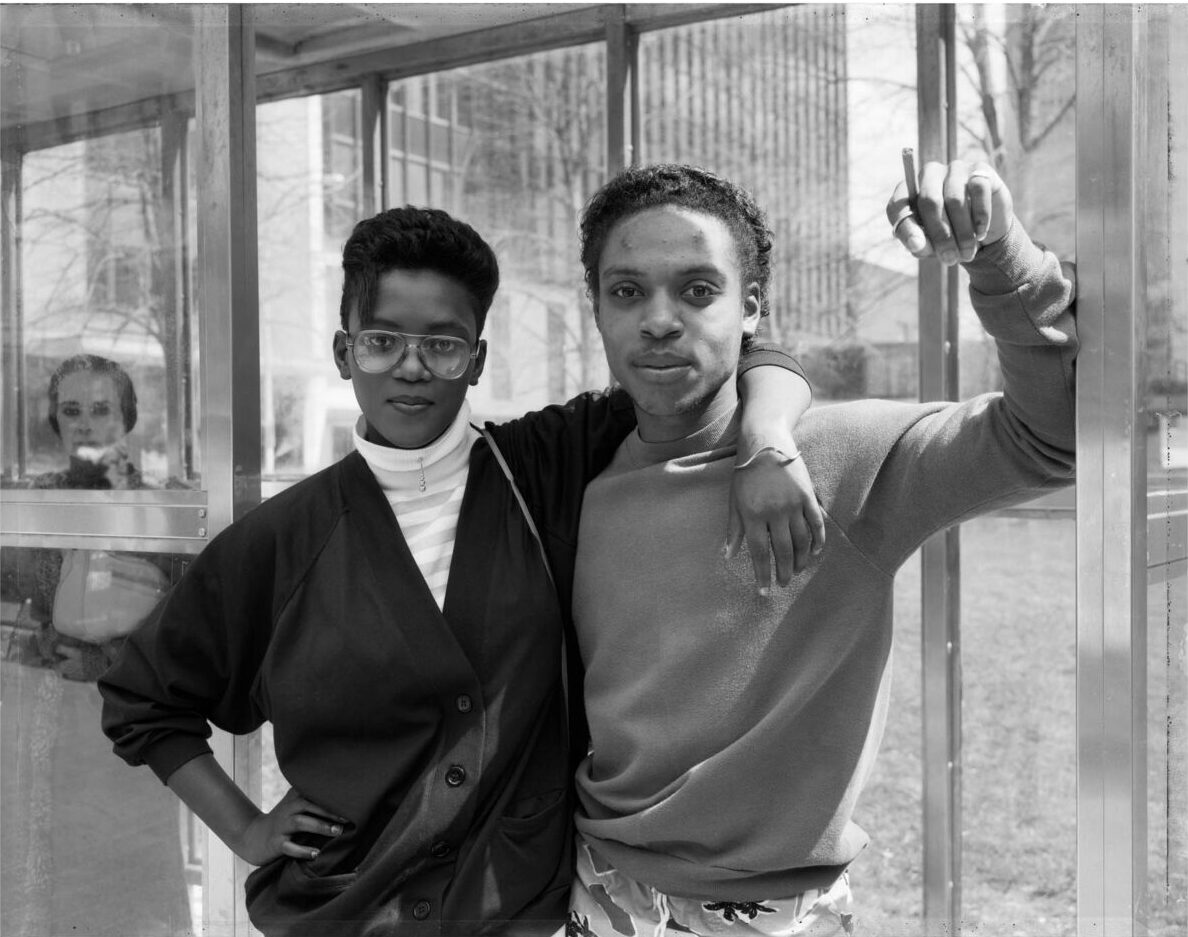Dawoud Bey (b. 1953) is a celebrated American photographer and 2017 MacArthur Fellow. From 1988 to 1991, he took to the streets with his camera, collaborating with Black Americans of all ages whom he met in various cities. He asked a cross section of people in these communities to pose for him, and the result was a landmark photographic series. “I started Street Portraits in 1988 whilst living in Brooklyn, NY,” Bey tells Aesthetica. “My intention: to create a public space of self-presentation; to use the environment of various Black communities as a “theatre of the streets.” I approached individuals with a large format 4X5 camera and Polaroid Type 55 film, which yielded both instant pictures and reusable negatives from which I could make large exhibition prints. I gave the photo to each person, reciprocating their consent and allowing them to possess the image we had made together. It was important that the Black subjects directed their gaze to the lens, and, by extension, to the viewer, creating an exchange that didn’t always take place in the social world. It was my way of extending their presence into spaces where a Black image was seldom seen.” Examples include A Couple in Prospect Park, Brooklyn, NY (1990) in which two figures embrace whilst looking straight into the camera, or the equally engaging A Young Man Resting on an Exercise Bike, Amityville, NY (1988). The portraits exude confidence, borne from a rapport between artist and sitter.

The images marked a key turning point in Bey’s creative practice, and, now, they are receiving their first standalone museum show at Denver Art Museum. Eric Paddock, Curator of Photography, says: “Street Portraits marks a turning point where the deliberate, closely observed portraits [Bey] had been making with a handheld camera began to contain what he has called ‘the kind of lush physical description’ he wanted his pictures to convey—and that is a consistent part of all the work he has made since. The slower process of working with a camera on a tripod invited collaboration between the artist and his subjects, making each picture both an experiment and a discovery. Each picture describes people and the places where they live.” Paddock is also keen to draw attention to Bey’s technical skill: “These photos are attentive to the quality of light on a particular day and the way the artist orchestrates all those things through his camera.”
Bey considers photography to be an ethical practice that requires collaboration between artist and subject. As such, the exhibition is organised by the communities in which the photographs were made: Brooklyn; Washington, D.C.; Rochester; Amityville; and Harlem. This is just one reason why Street Portraits is an essential entry in the history of portraiture: it’s a great example of how to take pictures of other people with consideration. Moreover, it’s about defying stereotypes. Bey is driven by a desire to depict Black subjects as complex, psychologically rich individuals – not only to the to the camera, but to the world.
Street Portraits, Denver Art Museum. Until 11 May.
Image Credits:
1. Dawoud Bey, A Couple at a Main Street Bus Stop, Rochester, NY, from the series Street Portraits, 1989. Pigment print. Courtesy ofthe artist and Stephen Daiter Gallery, Chicago. © Dawoud Bey.
2. Dawoud Bey, A Couple in Prospect Park, Brooklyn, NY, from the series Street Portraits, 1990. Pigment print. Courtesy of the artist and Stephen Daiter Gallery, Chicago. © Dawoud Bey.





